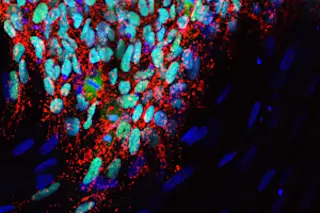For eight years, stem cell researchers chafed at restrictions limiting government funding to a handful of preexisting cell lines. Then on March 9, 2009, President Obama signed an executive order freeing federal funds for work on any type of stem cell, including cells derived from unused embryos at in vitro fertilization clinics. Stem cell research, already in high gear, has taken off since then.
The first clinical trial using embryonic stem cells to treat paralysis was approved by the Food and Drug Administration even before the new order. At the same time, other researchers have found ways to bypass the embryo, spurred in part by the earlier restrictions. Recent studies have shown how to reprogram adult cells into non-embryonic stem cell lines called induced pluripotent stem cells—“pluripotent” meaning that they could give rise to almost any category of cell.
• In January, the FDA gave the biotech company Geron a ...















